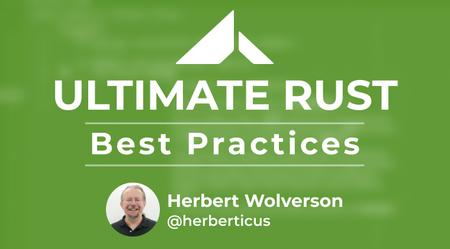English | MP4 | AVC 1920×1080 | AAC 44KHz 2ch | 21 Lessons (1h 40m) | 909 MB
This course covers many best practices to help you with integrate Rust into your workflow, and let Rust’s tooling work for you. It includes formatting, linting, dependencies, vulnerabilities, code style and general development advice.
Course Outline
- Section 1 : Tooling
- Section 2 : Code Best Practices
- Section 3 : General Best Practices
Table of Contents
1 The Best Practices Intro
2 Introduction – Formatting
3 Clippy (the linter)
4 Documentation
5 Understanding Dependencies
6 Managing Your Own Dependencies
7 Checking for Vulnerabilities
8 Check for Outdated Dependencies
9 Denying Dependencies by Licensing
10 Favor Iterators
11 Minimize Cloning (we have an alternative name as well Cloning Can Be a Code Smell)
12 Donвt Emulate OOP
13 Favor Small Functions
14 Clever Code
15 Floating Point Numbers
16 Platform & Feature Specific Code
17 TANSTAAFL (There Ainвt No Such Thing As A Free Lunch)
18 YAGNI : You Ainвt Gonna Need It
19 Domain Boundaries
20 Taming Compile Times
21 The Best Practices Outro
Resolve the captcha to access the links!
